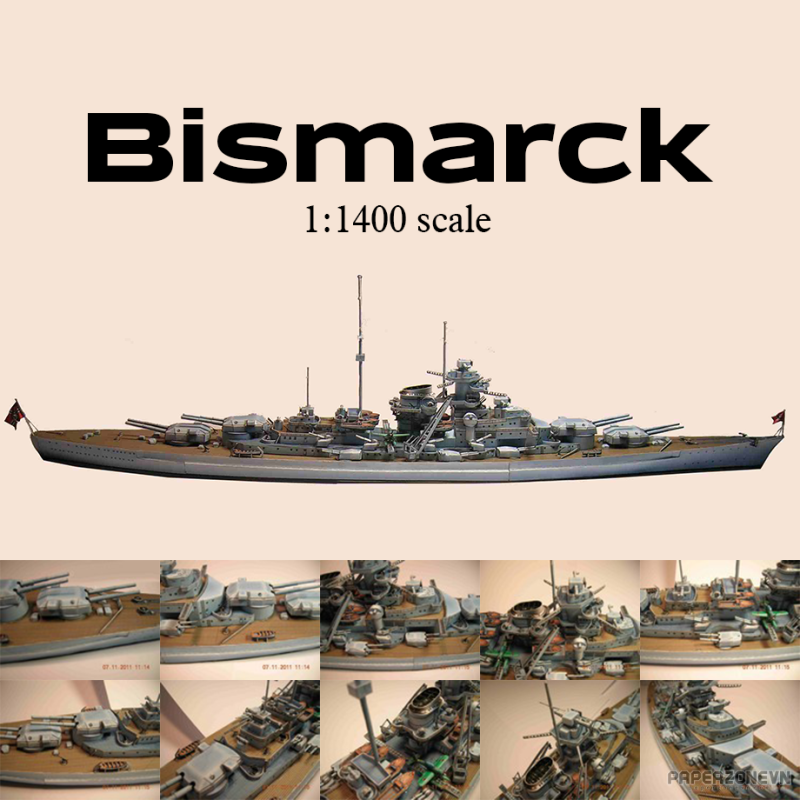- Thumbnail
-

- Author
- Fabrizio Prudenziati
- Printed File Format
- Page(s)
- 13
- Instruction Format
Sponsored:
Bismarck (1:1400) papercraft
Only a few instructions are included in the PDF.
Only a few instructions are included in the PDF.

Bismarck, German battleship of World War II that had a short but spectacular career.
The Bismarck was laid down in 1936 and launched in 1939. It displaced 52,600 tons, mounted eight 15-inch (38-centimetre) guns, and had a speed of 30 knots. In May 1941 the battleship, which was commanded by Admiral Günther Lütjens, was sighted off Bergen, Norway, by a British reconnaissance aircraft. Practically the entire British Home Fleet was immediately sent into action to intercept it. Two cruisers made contact off the coast of Iceland, and the battleship Prince of Wales and battle cruiser Hood soon engaged it. After destroying the Hood with a shell that exploded in the magazine, the Bismarck escaped into the open sea and soon began heading for Brest in German-occupied France. Sighted by aircraft 30 hours later (May 26), it was hit by a torpedo that crippled its steering gear, and the ship was bombarded throughout the night by battleships. On the morning of May 27 the King George V and the Rodney, in an hour-long attack, incapacitated the Bismarck, and an hour and a half later it sank after being hit by three torpedoes from the cruiser Dorsetshire. Of the some 2,300 crew aboard the Bismarck, only about 110 survived.
In 1989 an expedition led by American oceanographer Robert Ballard located the wreck of the Bismarck. The battleship was found lying upright at a depth of more than 15,000 feet (4,572 metres).
In 1989 an expedition led by American oceanographer Robert Ballard located the wreck of the Bismarck. The battleship was found lying upright at a depth of more than 15,000 feet (4,572 metres).
Sponsored: Google Advertising
